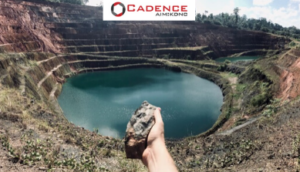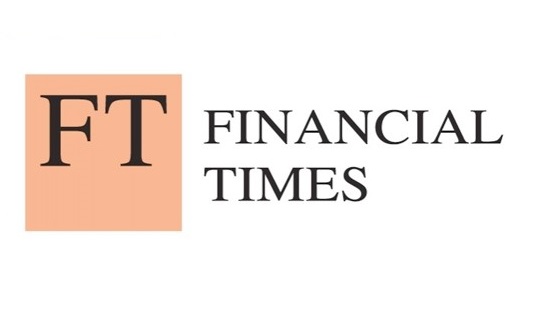Home » Posts tagged 'BHP'
Tag Archives: BHP
China demand pushes iron ore back above $90 a tonne – Financial Times
 Iron ore, the steelmaking commodity that is the main source of income for global miners BHP, Rio Tinto and Vale, broke above $90 a tonne this week for the first time since mid-March, supported by strong demand from China.
Iron ore, the steelmaking commodity that is the main source of income for global miners BHP, Rio Tinto and Vale, broke above $90 a tonne this week for the first time since mid-March, supported by strong demand from China.
The country is the world’s biggest producer of steel and demand for the metal, widely used in construction, has been steadily increasing since Beijing began in late March to ease nationwide lockdowns put in place to contain the spread of coronavirus.
Government data released on Friday showed industrial output in China recovering in April after collapsing during the most intense phase of the outbreak.
Daily crude steel production at big plants in China increased 13 per cent to 2.1m tonnes in the first 10 days of May — the highest level of activity this year, according to brokerage Argonaut Securities.

“The rising steel production didn’t result in an oversupply and price depression as signalled by markets. Rather, steel inventory has quickly declined and steel prices gradually increased,” said Helen Lau, an analyst at Argonaut.
For the week to May 15, total steel inventory in China dropped 34 per cent to 17m tonnes, led by a 37 per cent decline in stocks of steel reinforcement bars, a product widely used in the construction industry.
At the same time as demand in China has been rising, exports from Brazil, a key producer, have stalled because of lower shipments from Vale’s operations in the Amazon rainforest. The cause of the decline is unclear, but analysts said it could be linked to a rising number of Covid-19 cases in the state of Para.
“With China’s crude steel output now at a higher level than a year ago, demand for iron ore is outpacing shipment arrivals. As a result, China’s iron ore port inventories are gradually eroding,” analysts at Morgan Stanley said in a report.
Mike Henry, the chief executive of BHP, told investors this week that if China were to avoid a second wave of Covid-19 infections he expected raw steel production in the country to rise this year, offsetting double-digit declines in the rest of the world. The country accounts for more than 50 per cent of global steel production.
Benchmark ore with an iron ore content of 62 per cent was priced at $93.25 a tonne on Friday, according to an assessment by S&P Global Platts, up 5.4 per cent on the week.
At that price, BHP, Rio and Vale are generating billions of dollars of cash from their iron ore mines.
Analysts said reports China might impose import restrictions on Australian iron ore in retaliation for Canberra’s call for an inquiry into the origins of Covid-19, were probably off the mark.
Beijing has suspended imports of red meat from four Australian abattoirs and is planning to impose punitive tariffs on barley shipments.
“China relies on Australia for over 60 per cent of iron ore imports,” said Glyn Lawcock, analyst at UBS. “With the market tight, Chinese port stocks declining, and Brazilian exports down 12 per cent year to date, options today appear limited.”
Iron ore price firm after BHP confirms lower exports – Financial Times
 Price surge of steelmaking ingredient has created a huge cash windfall for big producers
Price surge of steelmaking ingredient has created a huge cash windfall for big producers
The price of iron ore remained above $120 a tonne on Wednesday after BHP Group, one of the world’s biggest suppliers of the steelmaking ingredient, revealed annual exports had declined for the first time this century.
In a trading update, the Anglo-Australian miner said it had shipped 270.5m tonnes of iron ore in the 12-months to June, down from 273.2m tonnes in 2018 — the first year-on-year decline in sales since at least 2000. Supply disruptions in Australia and Brazil and record steel production in China has seen the price of iron ore climb by almost 67 per cent this year to more than $120 a tonne, a level it last traded at in 2019.
The price surge has created a huge cash windfall for big producers like BHP and Rio, which at current prices are making more than $100 on every tonne of the commodity they ship to China, the world’s biggest consumers.
Both companies are tipped to announce big dividends when the announce results next month. At the start of its 2018/19 fiscal year, BHP expected to ship between 287m and 283m tonnes of iron ore but was forced to lower guidance after its mines in Western Australian were hit by a tropical cyclone and a major train derailment.
Rival Australian producer Rio has also suffered disruptions and has lowered its production forecasts twice since January. It expects to ship between 320m-330m tonnes of iron ore in 2019, down from 338.2m in 2018. Brazil’s Vale is also shipping less ore following a deadly dam disaster in January.
With BHP and Vale planning major maintenance programmes in September and October respectively, analysts reckon the iron ore market will remain tight. “BHP are expecting a modest production increase of 1 per cent to 6 per cent in 2020 [273m to 286m)”, said Paul Gait, an analyst at Bernstein Research.
“A planned maintenance programme . . . aimed at improving productivity has temporarily put a pause on any potential volume growth in the system.” In a report issued this week, analysts at Deutsche Bank said iron ore prices would not “break” sustainably below the $100 a tonne level until the first half of next year and then remain around $80 until 2021.
“One of the key takeaways from our [recent] China trip regarded clear evidence of a positive trajectory for infrastructure investment activity in the second half of the year, and only a modest deceleration in new [housing] starts during the same timeframe,” wrote analyst Nick Snowdon. “This points to a relatively healthy demand setting for iron ore in the second half of the year.”
In its trading update, BHP said it was likely to record $600m of exceptional items or charges to cover the costs of decommissioning a tailings dam in Brazil and redundancy costs. The company also flagged a $1bn hit from the impact of declining copper grades and the train derailment.
The Age: Even if it all turns sour, 2019 is already a vintage year for iron ore
On Tuesday the market watched in awe as the iron ore price was elevated to eye watering levels of $US108. By Wednesday, fresh speculation over marginal additions to supply caused the Chinese iron ore futures to wobble – the price dropped 2.3 per cent.
When a commodity has soared to a five-year high in a matter of months, wild swings are not surprising.
But make no mistake 2019 will go down in history as a vintage year for iron ore.

Even if the price dropped significantly in the second half of this calendar year to the $US80 levels it traded at towards the end of last year, the high prices for the first five months of this year would have already bolstered the profitability of the major Australian producers and the coffers of the federal and West Australian governments.
We haven’t seen iron ore prices at this level since 2014.
If the current spot price was factored into 2020 financial year earnings for our major miners, their profits would spike 60 per cent, according to analysts.
And a year at these prices would add about $4 billion to federal government coffers.
Already this calendar year Rio shares have risen 38 per cent, Fortescue stock has doubled in price, and BHP’s shares are 12 per cent higher.
How much is left in the tank for the iron ore price run and how long it can be sustained at levels above $US100 has left forecasters at a loss; they have had to revisit their assumptions as the price trajectory regularly leapfrogs over their targeted iron ore prices.
Back in February, CBA commodities analyst Vivek Dhar predicted the iron ore price could hit $US100 – a view that at the time was seen by some as outlandish.
Three months on and the product that feeds Chinese steel mills is in even higher demand, Chinese stockpiles are at a dangerously low level, supply in the first three months of the year from Australian producers was curtailed by weather events and most importantly the production issues that have plagued Brazil are not not getting any better.
Since the mine tailings dam burst in Brazil in January, the ripple effect and the actions of regulators and courts have forced suspensions of various operations – including dams and mines.
It has resulted in a roller-coaster ride for the iron ore price.
In May, Brazil’s major producer, Vale, told prosecutors in the state of Minas Gerais that a dam was at risk of rupturing at its Gongo Soco mine, about 60 kilometres from where its Brumadinho dam collapsed in January, killing more than 230 people.
The Brumadinho dam disaster and subsequent mine and dam closures in Brazil had prompted Vale, the world’s biggest iron ore miner, to slash its iron ore sales estimate for this year.
Hopes that Vale could increase its shipments were dashed early in May after a court ordered a halt to its operations at its Brucutu iron ore mining complex, reversing a lower court decision that had allowed the mines’ activities to resume.
Analysts have generally underestimated the lengthy regulatory fallout and the repercussions associated with industrial disasters. This time is no different.
And they certainly misread the strength of China’s steel output this year – which, on an annualised basis, topped 1 billion metric tonnes.
Few have been willing to formally predict how long this iron ore boom will continue because it is not a cyclical one.

However, the general consensus is that markets should not factor in the resumption of much additional supply from Vale this year.
And this should put a floor under the price.
Some new supply (from marginal producers in India and China) may come on stream later this year – but new entrants will also be waiting to hear about the length of supply disruptions in Brazil.
Currently there are a raft of estimates for 2019 at between $US90 and $US95 and most projections fall back to $US80 levels in 2020.
For investors with iron ore stocks, 2019 is the year they hit the jackpot.

